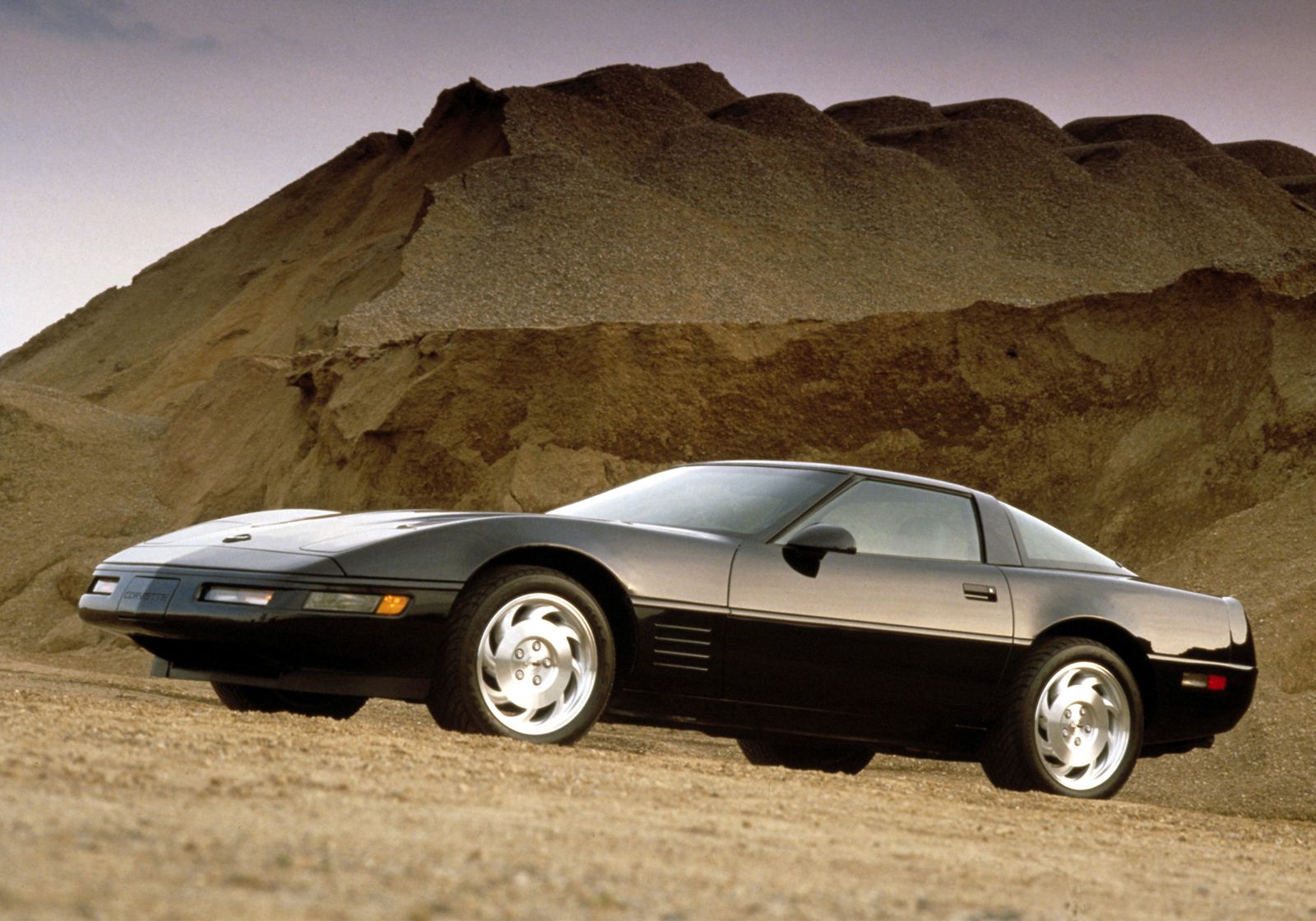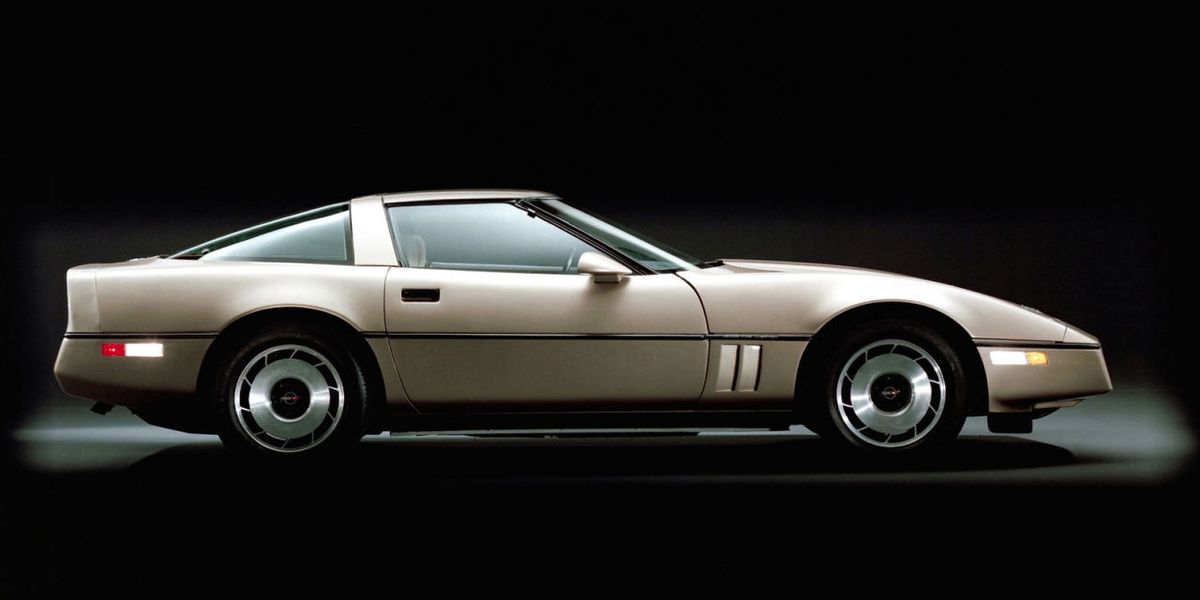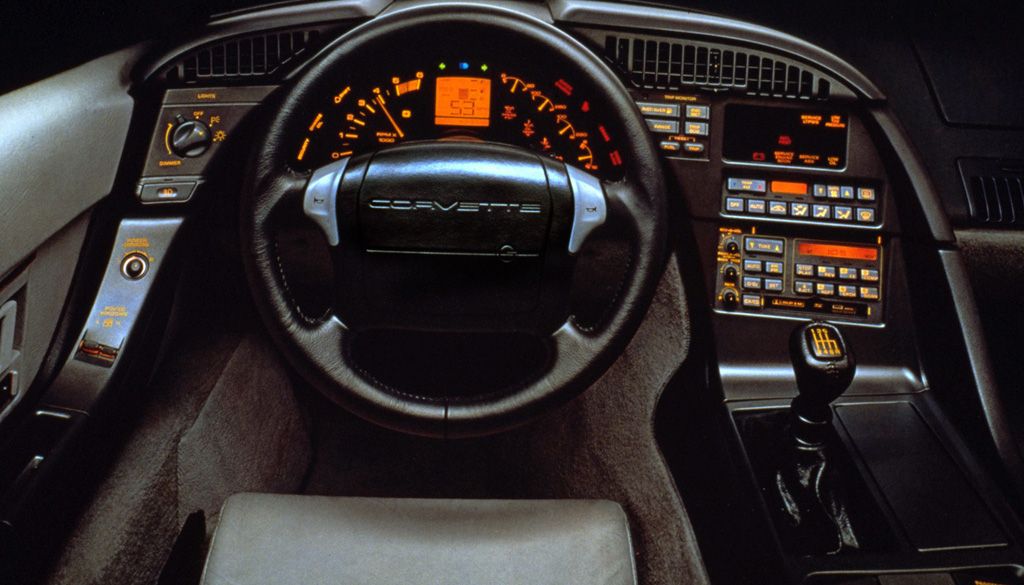It debuted for the 1984 model year, with no Corvettes built in 1983. It featured a radical departure in styling, but sustained cues alerting everyone that it was a Corvette. The body hosted a Targa-style roof and an openable rear glass hatch, again providing a lot of interior cargo space. The interior was a stunningly technical place to be with seats that looked like they came right out of a racecar, a fairly tall center console and a digital dashboard that made drivers feel like they were in a spaceship. The engineering behind the C4 was nothing short of absolutely astonishing, with not only a whole new frame and suspension system, but one created with computer aided technology and specialized forming techniques.
The engine measured out to 350 CIs and utilized the Cross-Fire manifold from 1982, but designers and stylists even worked their magic over the look of the engine, what people saw when they opened the massive clamshell hood was entirely modernized. It produced 205 HP but would increase steadily through the 1980s with 230 and 245 HP culminating in a 300 HP variant for 1992 with 330 HP available by 1996. As if that weren’t enough, there was the ZR-1, the Corvette that absolutely asserted without any doubt that Corvette was indeed a world class sportscar, and in fact, a supercar.

With a highly engineered 350 CI V-8 engine, ZR-1 debuted in 1990 with 375 HP, which grew to 405 in 1993. The prototype set speed and endurance records in 1989 that still stand today, and ZR-1 largely matched 0-60, ¼-mile and top speed figures with the likes of Ferrari, Lamborghini and Porsche for considerably less coin. Many naysayers often fear the LT5 V-8 engine thanks to its specially-designed and engineered nature, parts being of concern, and it’s no joke. If a driver blows an LT5 engine, it will indeed be difficult to source parts – but if a driver blows an LT5 engine, the driver more than likely did something wrong. Again, the LT5 set a number of endurance and speed records that still stand today. It’s a durable engine.
The C4 Corvette is a masterpiece of engineering and development, and arguably the ZR-1 was its summit. However, the 330 HP LT4 Corvette is often regarded as an absolutely stunning piece of machinery, and actually led the way for the development of the LS1 engines that debuted for 1997. While it doesn’t pack the punch and panache of the ZR-1, it’s certainly a robust performance machine and likely easier to find parts and service for in the long run. Little tip demonstrating again the evolution Corvette is dedicated to, for 1987 the ingress-egress became simpler thanks to repositioning the seat and door sills. Little changes like this are sprinkled throughout Corvette history, but the C4 seems to really be rife with them.
C4 Corvette Parts
The C4 was a highly-technical car for its day. In particular, of course, the digital dashboard display, sometimes known as the video game dashboard, was ground breaking for 1984. But today, these tech parts are often seen as antiquated and outdated. Nicely, there are some companies having great success rebuilding these components with modern parts, creating a more reliable unit overall. A great way to find them is to hit the Corvette clubs and events, talk to people who have C4s and find out who the go-to sources are for rebuilding these parts. The same can be said for the engine and other sections of the car as well. Nicely, like most Corvettes, parts are not too difficult to find, and while new parts are available, social media is a wonderful resource to find new old stock (NOS) components and body parts.

C4 Corvette Restoration
It’s coming to be that time, where people are beginning to restore C4 Corvettes. If you want to tackle it yourself, visiting the clubs and Corvette events is a great idea, get to know people who’ve done their own work or can recommend shops or individuals to handle the work for you. While it might seem intimidating, the number of available parts and the number of knowledgeable people is reassuring.
